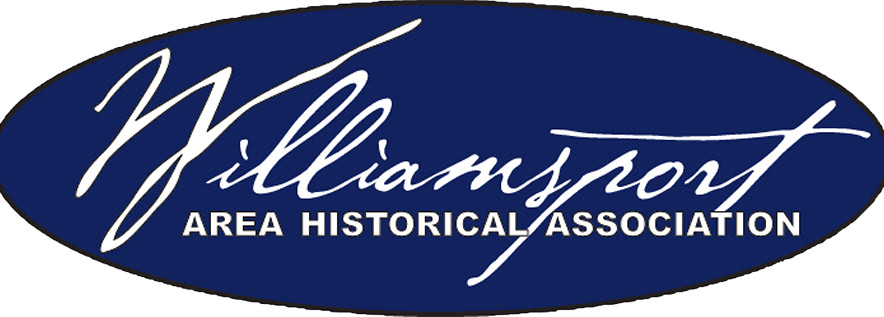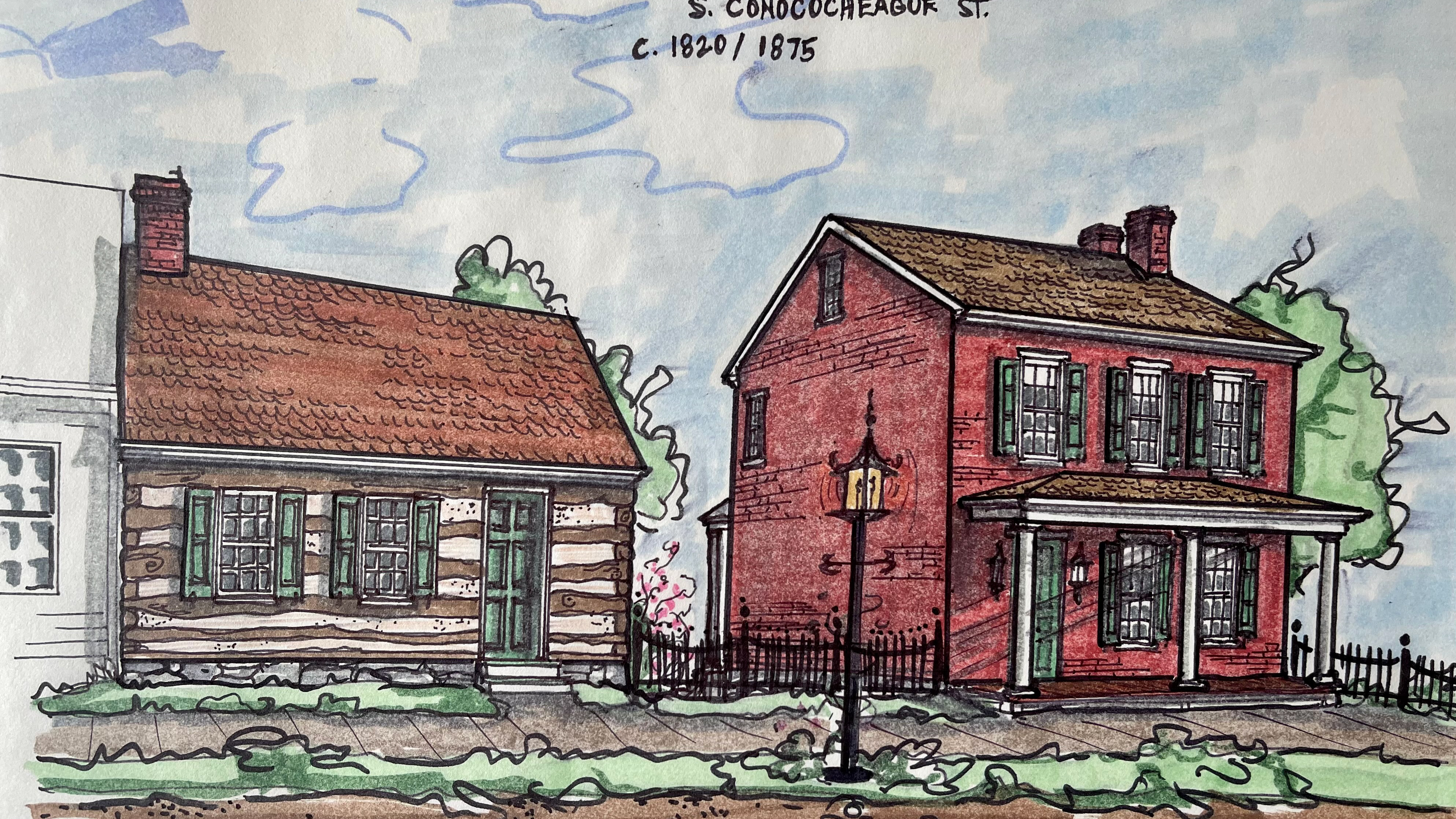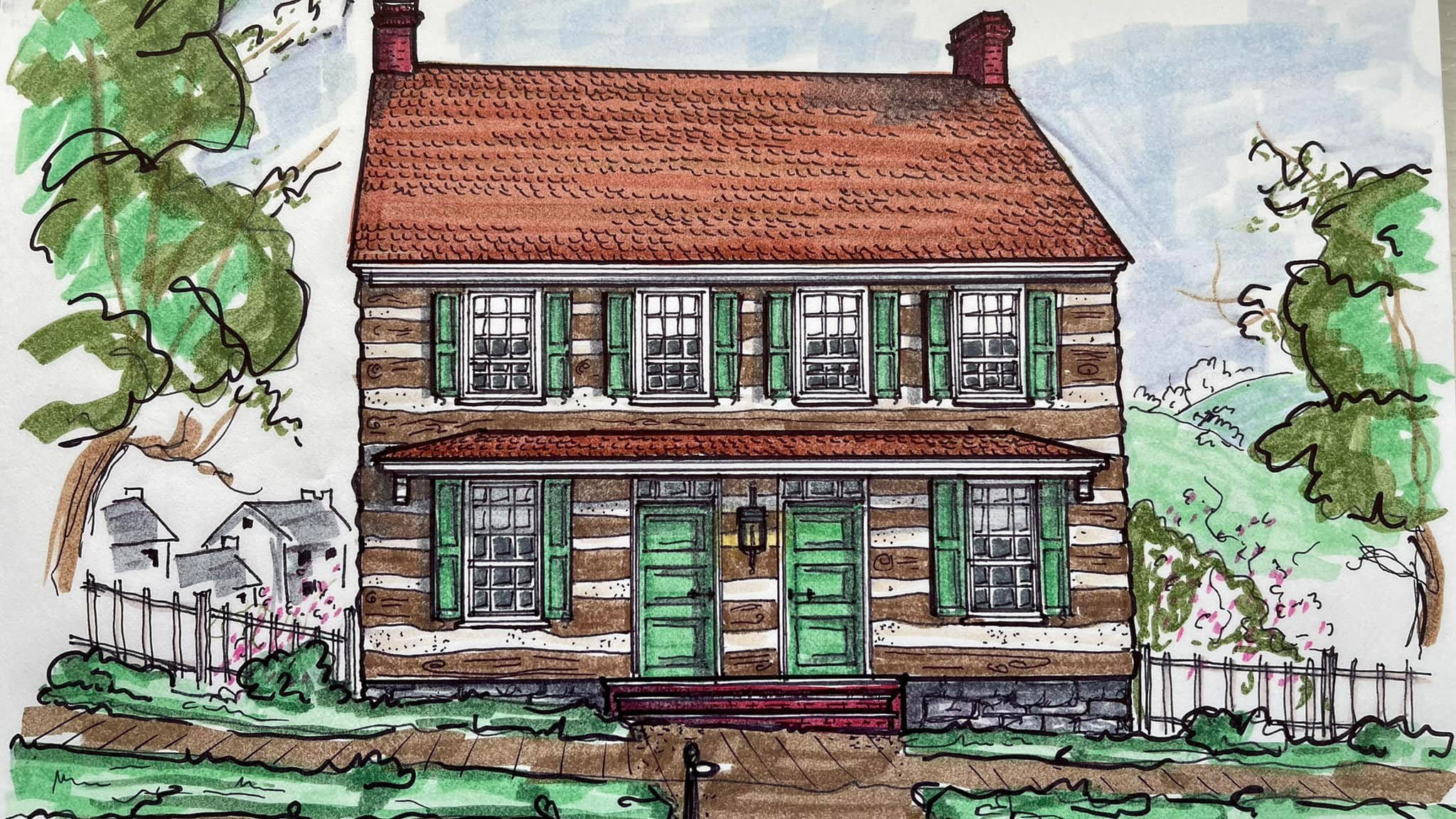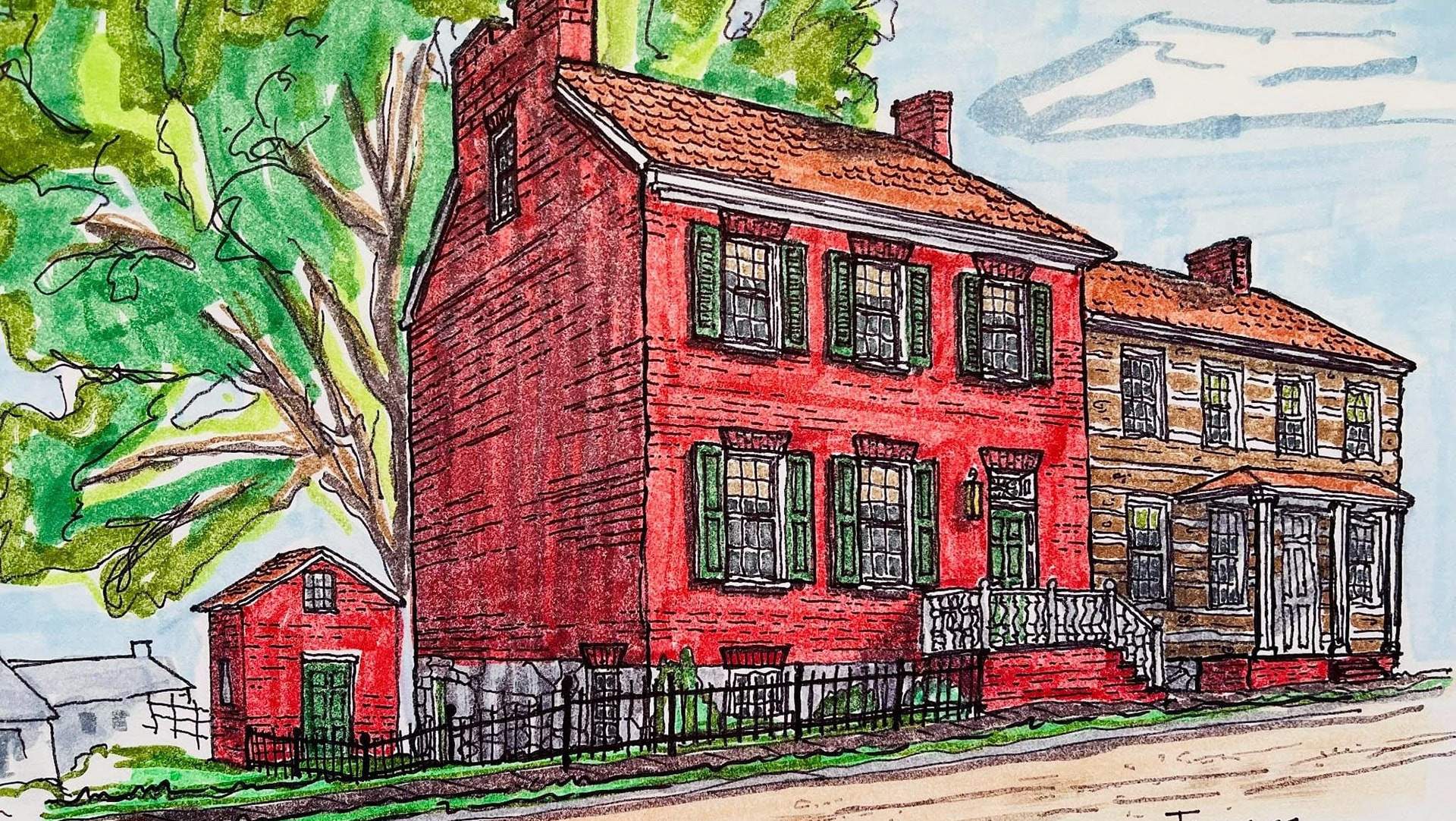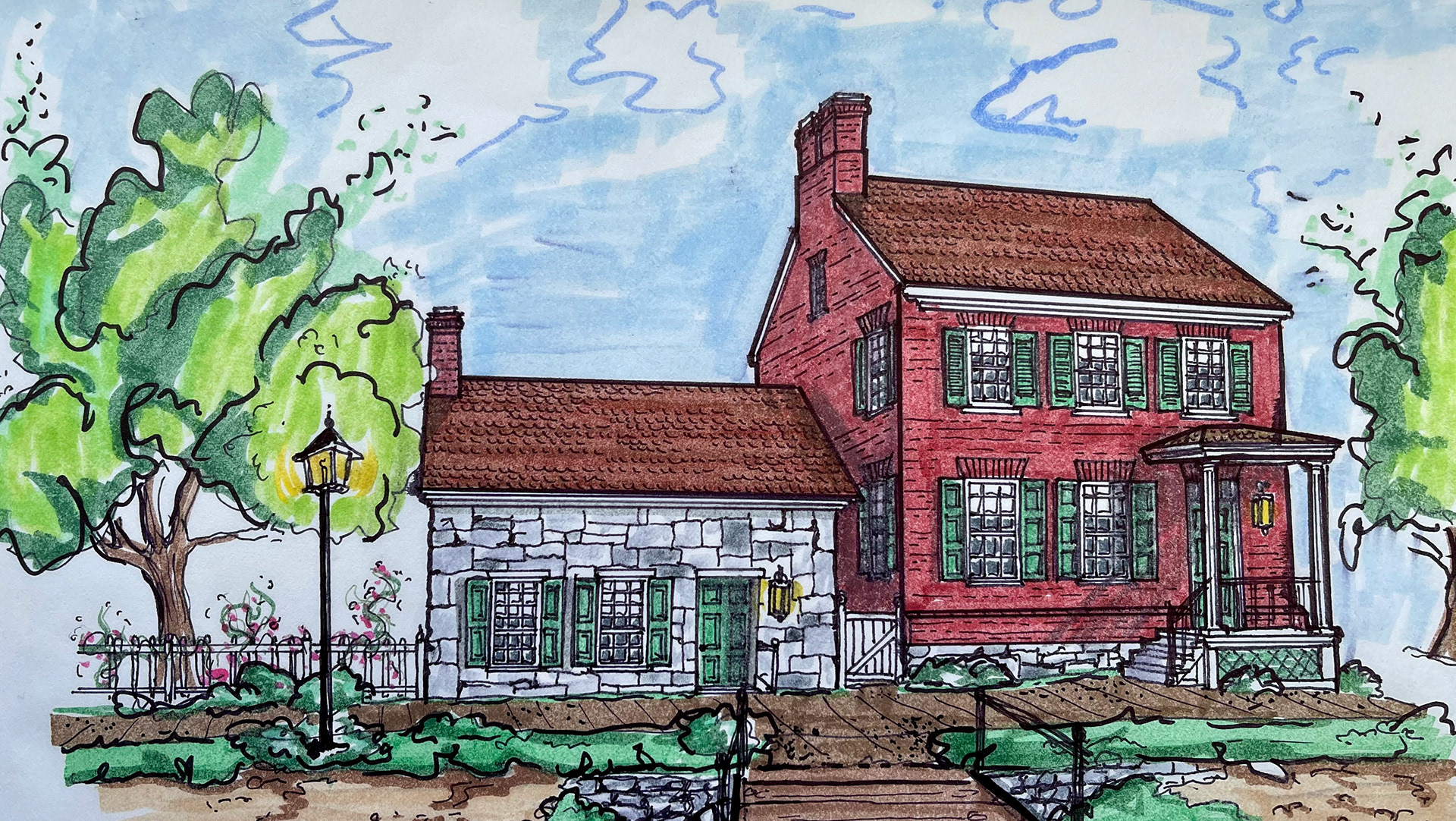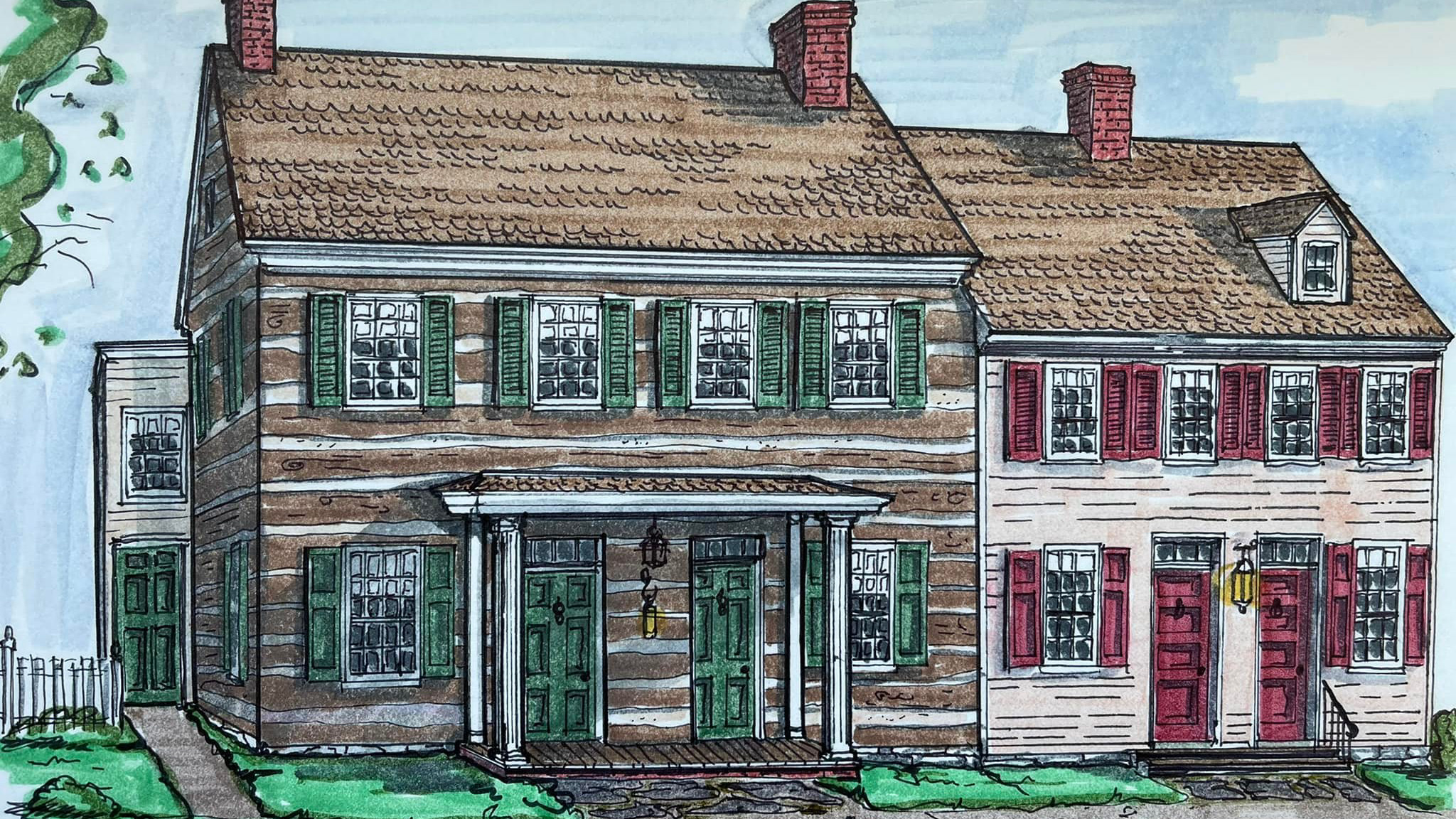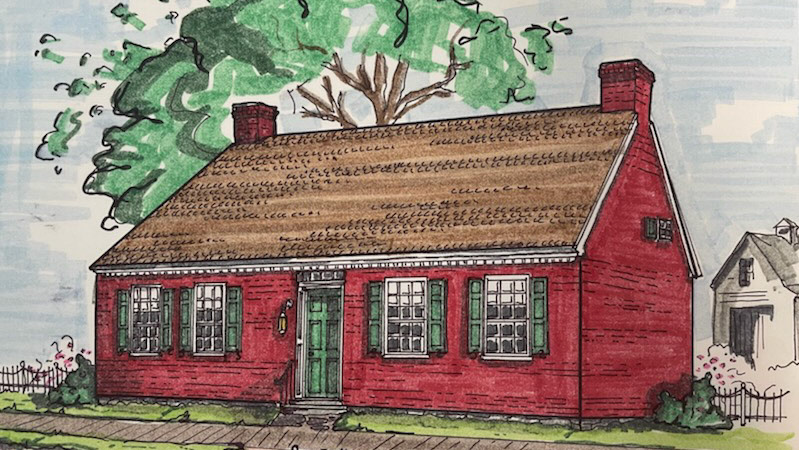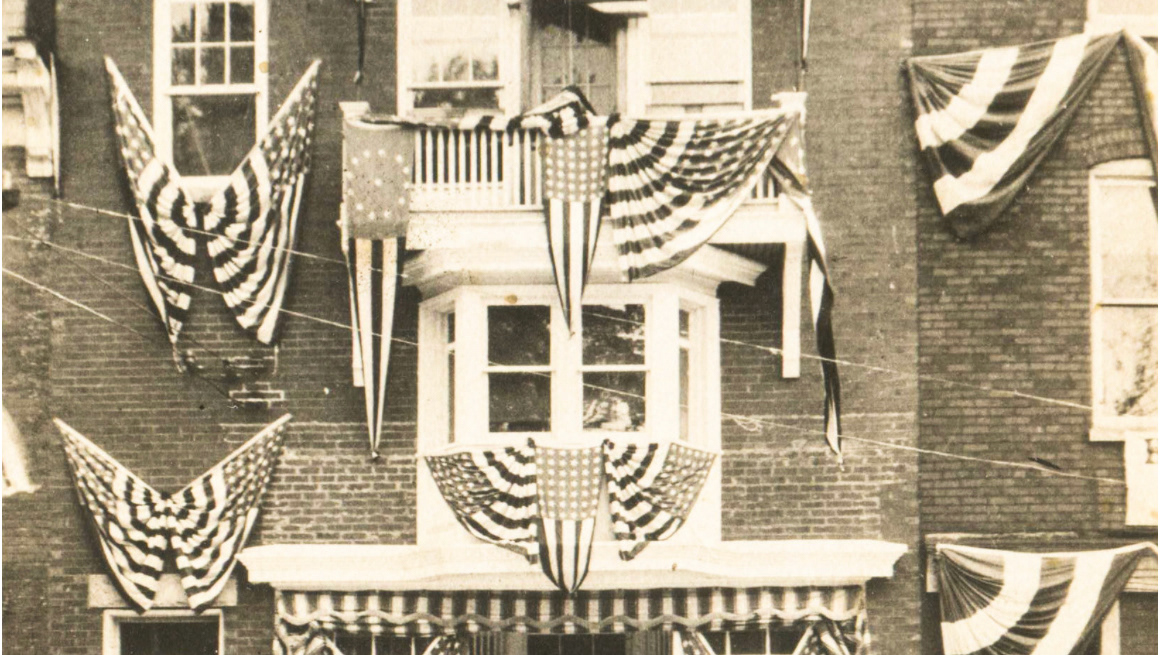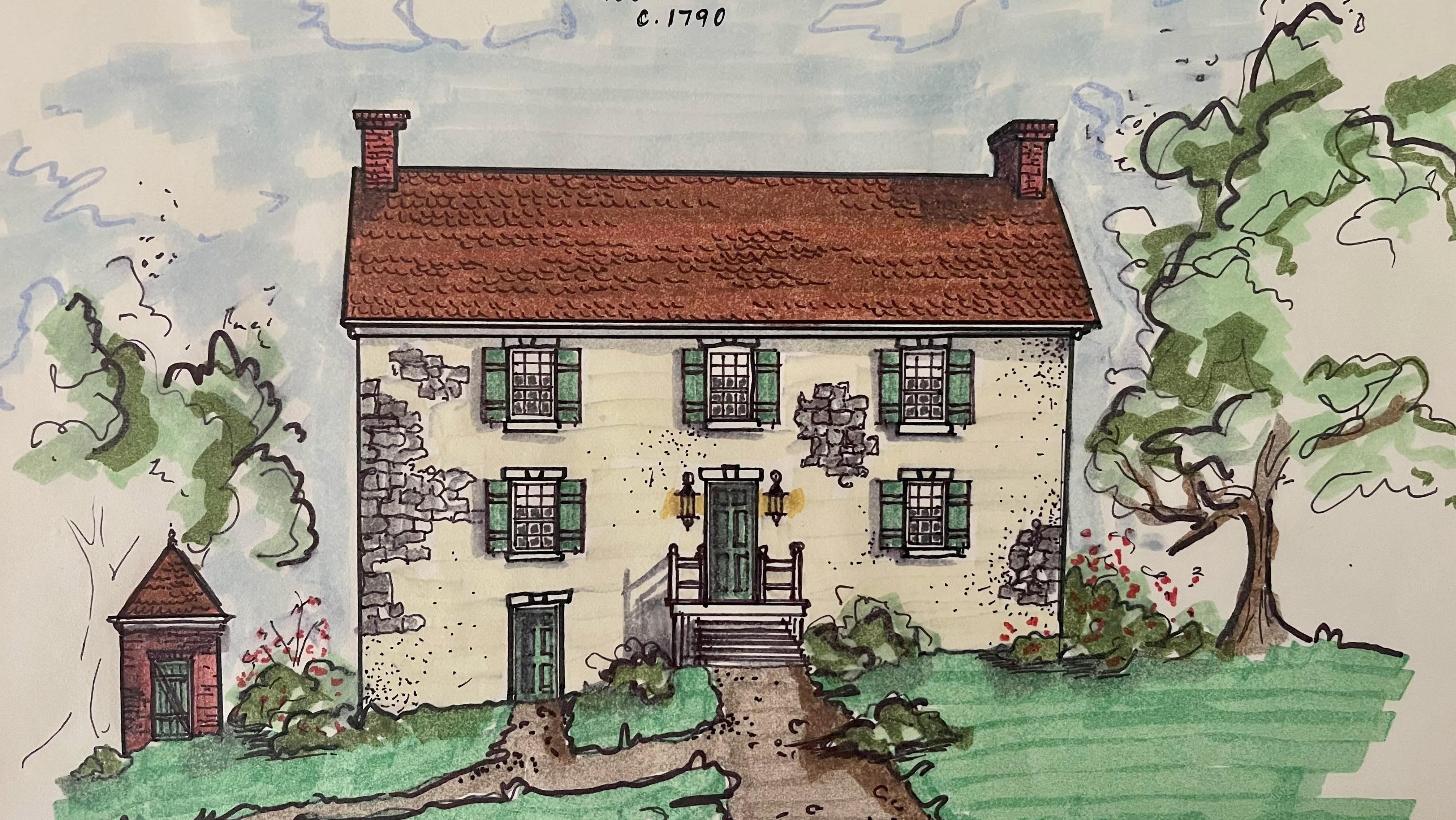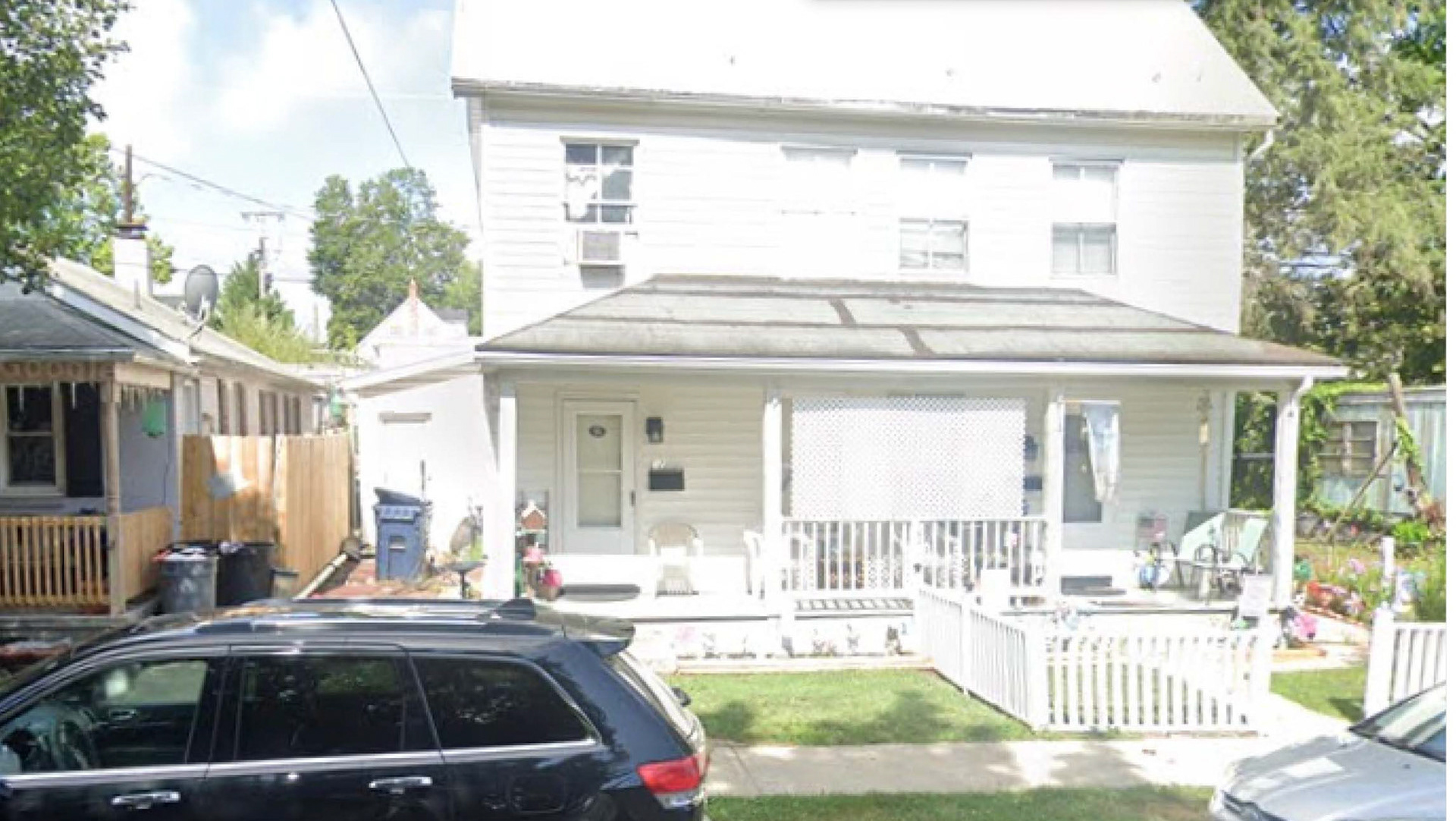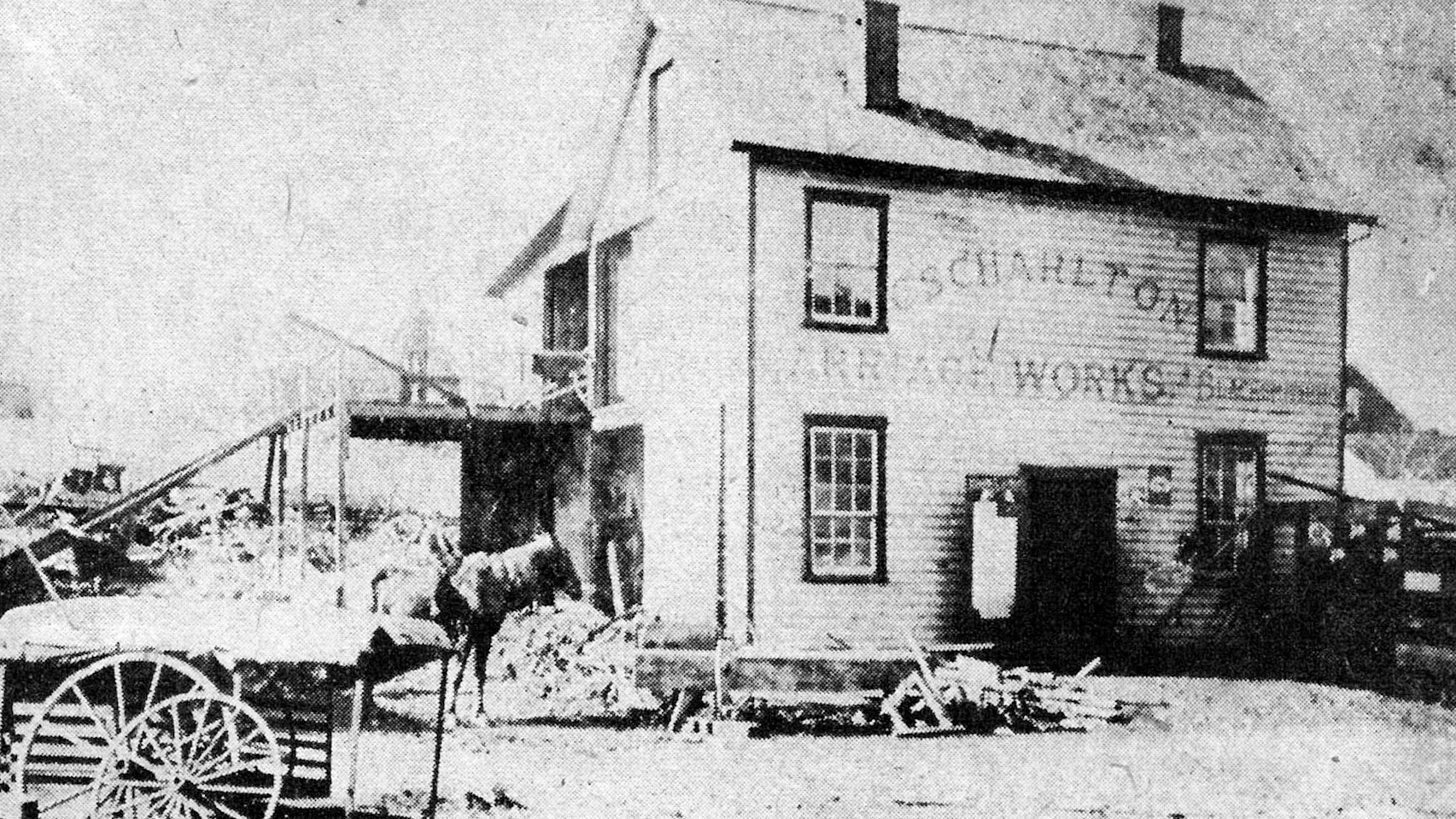Original watercolor by Tom Freeman, research by Ben Tinsley, owners of the Old Banking Mansion, Williamsport
Just west of the M&T Bank on W. Potomac Street stood two handsome Federal-style homes, built just inches apart. One was brick, the other log, later upgraded with a brick veneer.
In June of 1790, Williams-Port was bursting with excitement that President George Washington was seriously considering their little town as the site for our nation's capital. In speculation, Elie Williams, the younger brother of Otho, leased several lots along West Potomac and Conococheague Streets. The very day George Washington toured William's Port, fifteen more lots leases were signed by Otho Holland Williams; eleven additional lots to Elie Williams, two other lots to his brother-in-law, and two more to other merchants. If Williamsport was in contention for the honor, members of the Williams clan intended to capitalize future financial benefits.
In January of 1791, the President and Congress declared the swampy, humid, muddy, and mosquito-infested site near Washington's home as the nation's permanent home. As a later politician cleverly noted, "It is told that George Washington and the Continental Congress once selected Williamsport to be the sight of the Capitol of the United States – by the grace of God, we have escaped this calamity, for which we should be truly thankful.."
It took several years for Elie Williams to sell his speculation lots, but he profited as they were all prime lots along the main streets. In 1794, Elie sold lots 19 and 20 to Valentine Mautter/Motter for £60. The price of £60 indicated improvements on at least one of the lots as other lots in town were leasing for far less. Valentine Motter was born in 1762 in Middletown, MD. He married Susanna Engle in 1782, and sometime around 1794, they moved to Williamsport. It is not known what Valentine did for a living, but census records show he and his family lived in Williamsport until about 1830. While Valentine and Susanna lived at 20 W Potomac Street, they expanded the log cottage into the larger house many remember. In 1810 the Motter Family sold their home to Peter and Matthias Miller for £400 - a considerable profit indicating significant improvements.
The Millers were successful, enterprising men being the owners of a hatting business in the main square in Hagerstown, 230 acres outside of Williamsport with a sawmill and distillery, as well as multiple properties in both Williamsport and Hagerstown. A newspaper article states Peter and Matthias Miller moved from Hagerstown to Williamsport, where they intended to reside. It's a reasonable assumption that the brick house on the eastern portion of Lot 19 (left side of the drawing) was built by the Millers, while the log Motter home was enhanced with a brick façade and porches.
Perhaps the financial crisis of the early 1800s or a change of heart set in, but in 1815, the Millers sold their fine homes Matthew Van Lear, one of Williamsport's wealthiest citizens, for the astounding sum of $1800. The huge purchase price proved both houses were quality built and in fine condition.
After the death of Matthew and his wife, their only daughter Sophia Van Lear Findlay inherited a large portion of their vast landholdings, including these houses. Sophia was the wife of attorney Archibald Findlay, the son of Pennsylvania Governor and US Senator William Findlay.
The homes were sold to the Ardinger Family in 1888 and changed hands several times afterward. The brick house on the eastern portion was lost sometime between 1962 and 1979 to unknown circumstances. The Motter log home was sold to Thomas Funk in 1979; he would be the last occupant of the old home. Within the last 30 years, the house was purchased and demolished for yet another parking lot. During demolition, a box was discovered containing Confederate money and a journal detailing the 1863 occupation of Williamsport.
These handsome houses once added charm and character to our streets; they were built and owned by prominent citizens important to the development of our town. Our heritage is important and should be protected.
20 W. Potomac Street today
